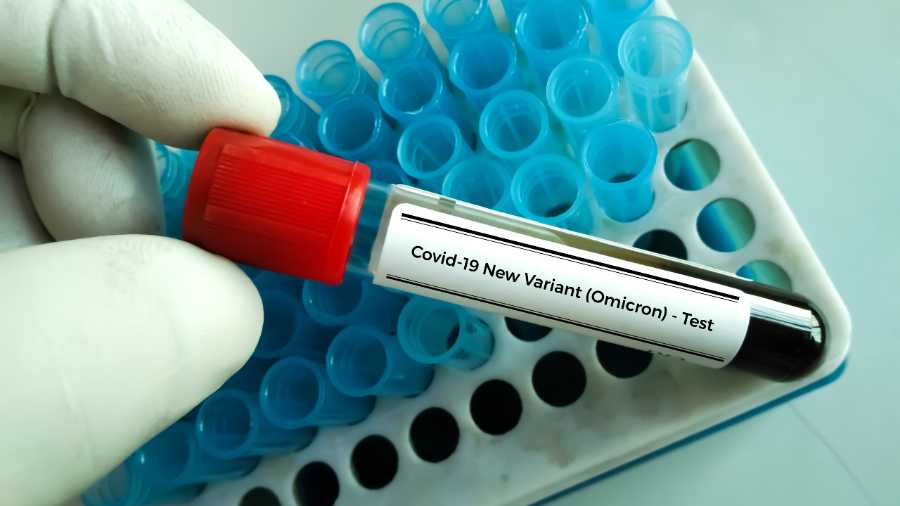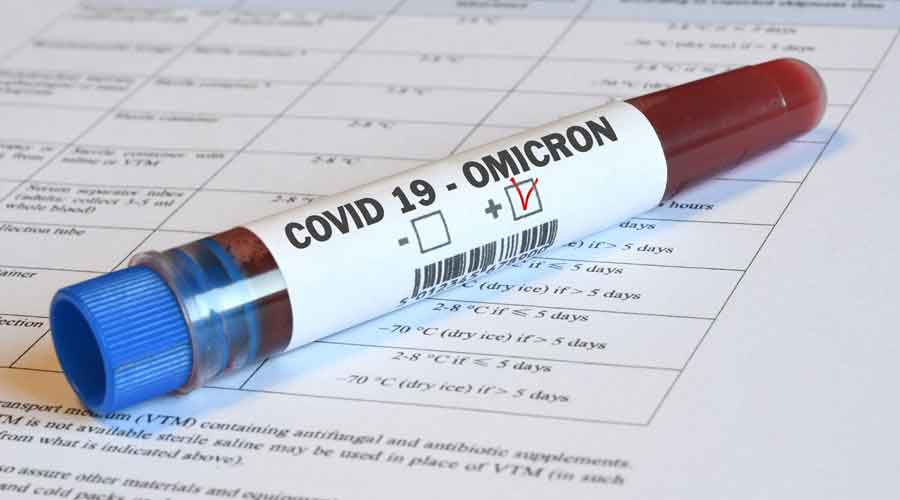Early signs of omicron circulating in the community unnoticed have emerged in India, medical experts said on Thursday, flagging the need for augmented community-level testing with genomic surveillance for early detection of local surges.
India had documented up to Thursday morning 77 omicron cases in 11 states, with 37 cases among international travellers, 23 among contacts tested, and 17 classified as “unknown”, said a medical researcher familiar with the data.
Health experts said many of the infected contacts who are asymptomatic might not have been detected as omicron cases if their samples had not been tested and sequenced. For instance, a 41-year-old woman at Mehsana district in Gujarat was tested only because she had visitors from Zimbabwe.
While her visitors from Zimbabwe tested negative in all three tests on them, authorities decided to test the woman as a precautionary measure and found her positive. Genome sequencing results established her as omicron-infected, a PTI report from Mehsana said on Thursday.
“Omicron is very likely already circulating unnoticed among people,” said a medical researcher in a government institution who requested not to be named. “People with asymptomatic infections are unlikely to come for testing. Many fully vaccinated people may not show symptoms.”
India’s seven-day average count of daily new Covid-19 infections has remained below 10,000 for more than three weeks, declining from 10,011 on November 22 — the day marking India’s first omicron infection — to 7,480 on December 15.
But a senior epidemiologist said it was too early to say whether omicron was in community transmission in India. “Community transmission is when you can’t find the source of infection in a substantial proportion of cases after exhausting reasonable efforts in contact tracing,” the epidemiologist said.
Amid the country’s rising omicron counts, some health experts believe the focus on community-level testing and genomic surveillance and preparedness through planning and hospital infrastructure needs to be prioritised over airport screening.
“Spread was unavoidable to start with — we can only anticipate and be prepared well,” said a physician turned genome scientist. “People need to understand exponential growth — two power 10 is 1,024, but two power 30 is one billion.”
Health experts also said assessing omicron’s infection severity in the country was as important as keeping counts of those contracting the viral strain. The severity of infections is expected to be influenced by multiple factors such as prior Covid-19 infections, vaccination status and age distribution of the country’s population.
Preliminary observations from South Africa have suggested that omicron causes mild disease. But researchers caution that only more observations in other countries spread over several weeks would help validate or disprove those early findings.
“A factor complicating comparisons between countries is that their age profiles can vary,” said Nimalan Arinaminpathy, a mathematical epidemiologist at the Imperial College, London. “We know that earlier Covid-19 variants have consistently been less severe in younger age groups. Differences in populations may drive apparent differences in severity.”
Queries sent by this newspaper on Thursday to health officials engaged in Covid-19 surveillance and testing asking what proportion of India’s omicron cases is asymptomatic did not evoke a response.
Many experts are concerned that health authorities across the country are not testing enough. India conducted 1.21 million Covid-19 tests on December 15, a figure lower than 1.28 million tests a week ago on December 8.












